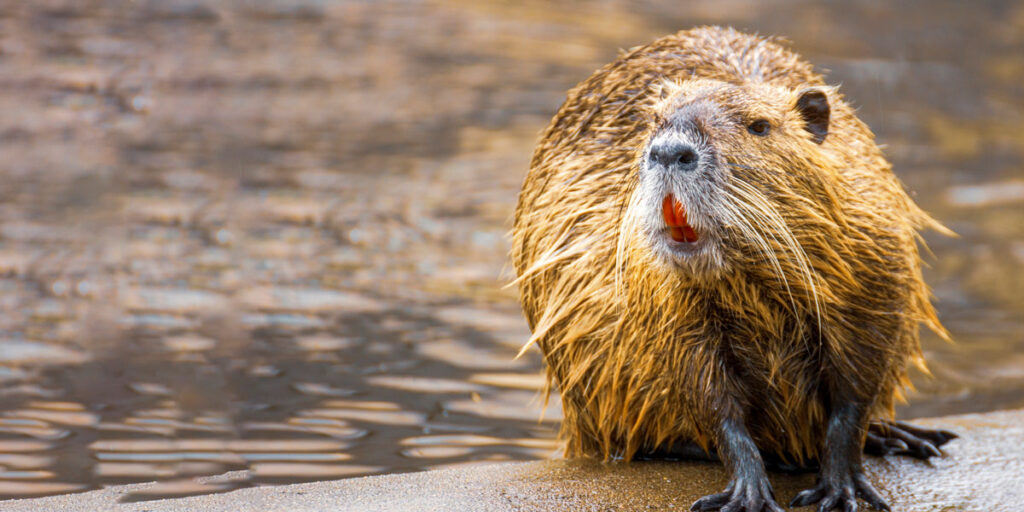
Beavers are in the news these days—and for good reason. According to recent research, their dam-building skills could be key to helping our rivers and watersheds become more climate resilient. It may be strange to think about one of the world’s largest rodents as a working-class superhero. But, the fact is, this keystone species is a hardworking ecosystem engineer.
Before the 1600s, the United States had approximately 221 million acres of wetlands and beavers roamed in almost every region that had streams and creeks. After the Europeans settled in North America, rivers were channelized by canals and dams, drying wetlands for agriculture, utilities and homes. At the same time, beavers were trapped for their valuable pelts. The landscape began to dry dramatically and beavers were almost driven to extinction. In the 1980s the United States was down to 103 million acres of wetlands, which has only continued to decline.
Wetlands are critically important because they improve water quality and supply by filtering contaminants, enhancing soil moisture and recharging groundwater. Beavers enhance wetlands by building dams, which slow water flow across floodplains, reducing the likelihood of flooding and helping landscapes survive forest fires. Who knew that was another one of their superhero abilities?
Fire can not spread easily on land filled with water, mud or well-hydrated vegetation. Past studies have shown that after large wildfires most of the large beaver wetlands were still green and healthy. Areas without beavers averaged three times more damage than those with beavers present. It’s pretty amazing and beneficial for other wildlife that can’t outrun the flames.
Fortunately, humans can help beavers make a comeback by creating beaver dam analogs on relic wetlands. This is especially important in the West as the climate warms and dries. These simple dam analogs have proven effective in slowing flows and enticing beavers back to historic wetlands. Given enough time, the beavers create lush riparian habitat ideal for fish, deer, elk, moose, swans and other birds.
In 2022, Forever Our Rivers helped fund a transformative project at Trail Creek, the headwaters of the Gunnison River—a tributary to the Colorado River. Crested Butte’s High Country Conservation Alliance partnered with the USFS and the National Forest Foundation to build more than 150 beaver dams at Trail Creek using willows, conifer and mud. The dams began to rewet 30 acres of historic wetlands. The bonus of this hard work was that two beavers found their way back to the area, finding it suitable for residence. The best ending to the story will be watching these beavers as they work, maintaining the wetlands for years to come.
While the beaver’s work can be a nuisance to some humans, the benefits of beavers are substantial. The love for beavers is continuing to grow nationwide as more people become aware of the need for their partnership.
Plus, they are cute, right? Even with their orange teeth.
Endangered but oh so loved
The Colorado River provides water to more than forty million people in two countries, seven states, and twenty-nine Native American tribes. Even though it’s endangered, it is still one of the nation’s most beloved and relied-upon rivers.
Want to know more?
Check out these 17 interesting facts by Inspirich and then tell us what you found most fascinating—we’d love to know!
